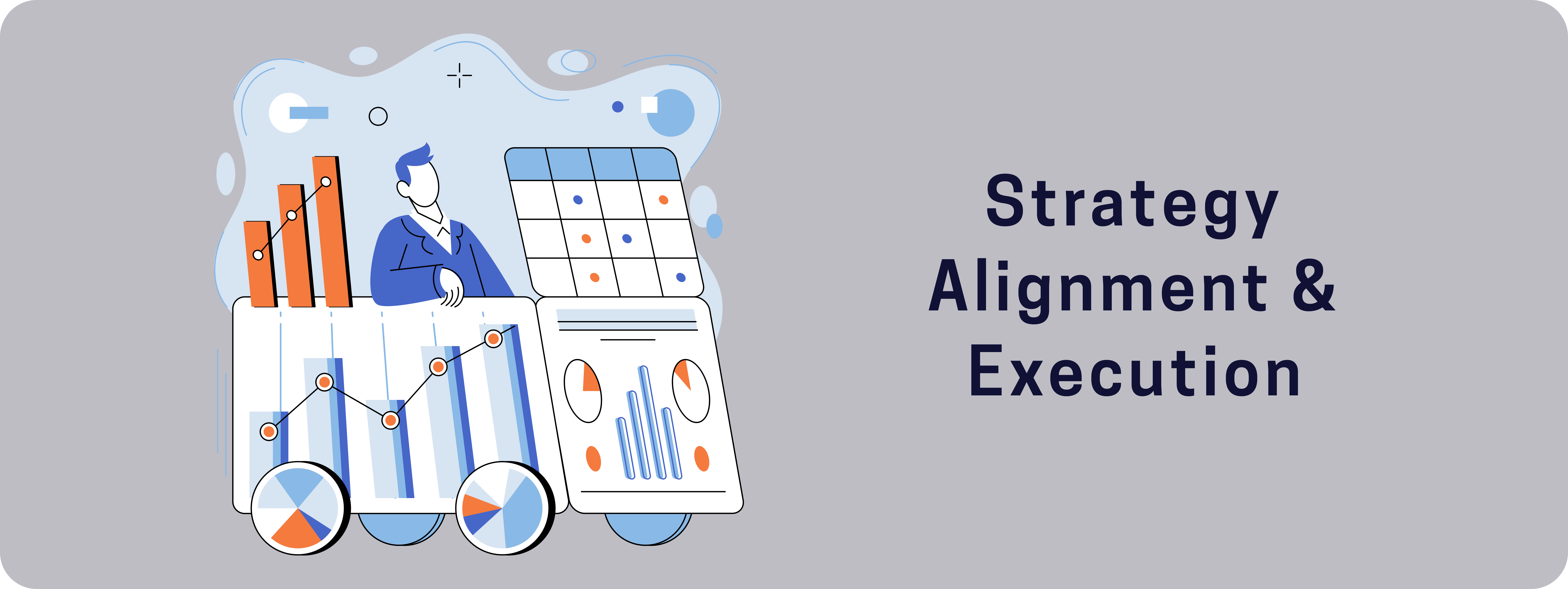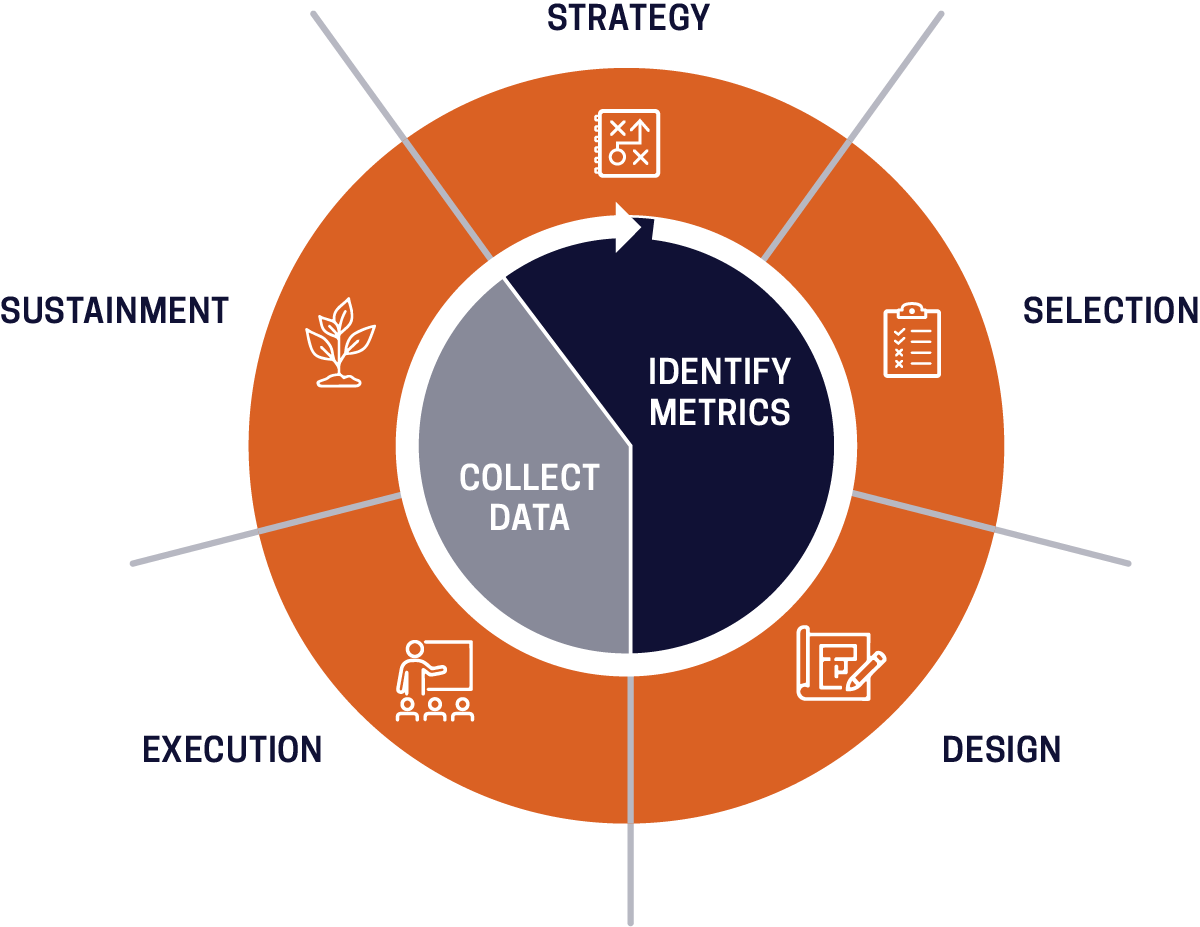Today's HR leaders face a host of new and complex challenges, among them talent recruitment, retention, and ensuring people sit at the heart of their organization's strategy. For leaders, the conundrum is about balancing repeatable processes with engagement, innovation, and creativity.
They aren't thinking about engagement for engagement's sake or because it's a nice-to-have at their organization. It's a must-have for any organization seeking to get the most out of its workforce and fuel growth. Engagement is the driver of the factors that consistently lead to successful business outcomes.
In a series of roundtables examining the processes that underly true and lasting employee engagement, McChrystal Group gathered dozens of people leaders from across industries to share their respective journeys in their roles and how they are approaching the most pressing challenges in human capital. Below we summarize takeaways from our roundtables on four focus areas that are each intrinsically tied to employee engagement: strategy alignment and execution, empowered decision-making, leader development, and talent sciences.
Here's what senior leaders say about how they are thinking about employee engagement and the processes that drive it:

Strategy Alignment & Execution
When it comes to executing an organization's strategy, alignment and engagement are inseparable. When teams feel more aligned, they are significantly more likely to be engaged; when they are engaged during the strategy process, they become more aligned with the direction overall.
Even Great Organizations Find Themselves Misaligned
Whether it is because the organization is rapidly growing, it's making a strategic pivot, or a new leader has taken the helm, participants all agreed that change rarely comes without some degree of misalignment. The discussion revealed a few common challenges that leaders had seen result in misalignment:
- Teams believe they are aligned because they have a common vision and intended outcomes, but they have not clearly communicated "how" and "what" they will do to achieve those goals.
- Alignment is not cascaded and articulated down to the appropriate levels. Some participants indicated that as they got into the functional level of the business, teams were less clear on how their priorities rolled up into the organization's overall strategy.
- Different parts of an organization operate at different speeds. The discussion emphasized that urgency – whether a high-profile project or emergent crisis – provides incredible focus. However, one participant noted that "not every person can work for the most exciting part of the organization," and those outside the spotlight can quickly disengage.
When I first started in this space, the thing we would teach managers to do was to tell your people exactly what you want them to do. It was way more of a culture that was task oriented. Our world doesn't work that way anymore. We are way more complex for all types of reasons, whether it be where we're located, being remote versus sitting in the office and seeing each other every day, and a lot of other factors. The human aspect of the job is more complex.”
Chief Human Resources Officer
How Organizations Get (and Stay) Aligned
Experience shows us that strategy alignment is not just about an agreed-upon strategy document. A clear, concise framework is a critical step, but the process by which organizations build and continuously refine it is a key determinant of success.
- The discussion highlighted that when a team collaboratively discusses what they need to achieve, how they will get there, and which metrics they will monitor, they develop the ownership and context required to execute the strategy.
- Staying aligned requires a deliberate operating rhythm that continuously reinforces where the organization is going, not just what it has achieved in the past quarter.
- HR leaders play a complex role in helping connect CEOs' (often dynamic) visions with a consistent, actionable strategy. Since team members' understanding of how they contribute to the organization's direction directly correlates to engagement, this role is pivotal to team success.
By The Numbers:
Our research has shown that when leaders articulate what their team must do and how that contributes to company objectives, their team members are 67% more likely to be highly engaged.
Employees who rate their organization's alignment highly are roughly twice as likely to self-identify as being engaged.

Empowered Decision Making
HR leaders are increasingly driving the conversations at the highest levels to equip and empower decision-makers throughout the organization. Many organizations and their leaders struggle to strike the right balance between centralization and decentralization, hindering their ability to empower teams and make timely, informed choices.
Decisions Come Too Slowly or are Unnecessarily Escalated
The discussion highlighted two inversely related variables: risk tolerance and time. When organizations fail to account for the former, they increase the latter.
- Senior leaders tend to be more comfortable taking risks and learning from failures, which allows them to act more quickly on lower-consequence decisions.
- Mid- and junior-level teammates perceive the magnitude of those decisions differently and, to mitigate risk, take much more time to act when they are not fully confident something will be wildly successful.
Empowerment is a Combination of Process and Culture
Participants expressed that sometimes there is a "say-do" gap in how leaders talk about healthy risk-taking, and the perceptions of what happens when someone makes a mistake. Often those cautionary tales are more company "lore" than reality, but the effect is still the same.
- Leaders can overcome these hurdles by implementing processes that foster information sharing – i.e., communication forums – so that team members are armed with context to make effective decisions.
- They reinforce a culture of continuous learning by exhibiting trust-building behavior like highlighting healthy risk-taking.
People want somebody to tell them 'yes, that's right,' or 'yes, proceed.' And we've been actively trying to change that. We're a pretty flat organization, but it's always the same people who become the go-to for decisions. Especially as we've grown...we realize it's not sustainable. It's easy to feel like you're doing the right thing, and then you realize, 'I need to change my mindset and make sure that other people are not just feeling empowered, but they're actually doing it' and they're not always coming to me to get approval.”
Chief Human Resources Officer
Differentiating Decisions
The above is not to say that leaders can be expected to completely let go of the reins. The roundtable discussion emphasized that not all decisions are created equal.
- Organizations must clearly differentiate between high-stakes decisions that require careful consideration and those that benefit from a fail-fast approach.
- This differentiation establishes expectations of the decisions only the senior leader should make. "Simple rules" align an organization on who is empowered and expected to make decisions to avoid unnecessary delays and foster a culture of trust and accountability.
By The Numbers:
Our research found that employees empowered to make the decisions necessary to do their jobs without receiving approval from their managers are 38% more likely to have a sense of shared ownership of their company's successes and failures.
Further, employees who receive timely input from decision-makers are 43% more engaged than employees who do not.

Leader Development
The importance of aligning strategy, process, and culture within organizations to drive success was a focus throughout this discussion. The conversation touched on each part of the diagram below, from ensuring the organization's development program was rooted in the firm's strategy and prioritized sustaining the skills in practice.

Designing a leadership development program starts by identifying which outcomes your organization-wide strategy intends to drive and then aligning and measuring each step against those goals.
Addressing the Growing Demand for Leadership Training
The increasing demand for employee leadership training and development opportunities was highlighted and a consistent theme throughout.
- Participants discussed research indicating that 76% of employees expressed satisfaction with their current training, a significant increase compared to pre-pandemic levels. However, 55% of employees still desired more training, reflecting the ongoing hunger for professional development.
- The roundtable stressed that meeting this demand was also a mechanism to attract and retain top talent.
- Tech-enabled training provides cutting-edge solutions to keep employees ahead of the unique challenges of leading a dispersed or mobile workforce.
Leadership Development Begins with Business Strategy
One prevalent theme discussed was aligning leadership development initiatives with the organization's overall business strategy.
- The need to connect leadership training to tangible business outcomes was emphasized so that selection, design, execution, and sustainment are guided by and evaluated against key performance metrics.
- These efforts ensure that leadership development programs have a meaningful impact on the organization's success and aren't seen as rewards for tenure or remedial programs.
Leadership Development Tailored for Each Level
A shared belief was expressed that leadership development should be tailored and accessible for every level of the organization.
It's important to get it out of the classroom and into the boardroom so that we can actually begin to live these behaviors because that's really where they stick. If they aren't in exhibited there, they don't stick in the organization.”
Chief Operating Officer
- The discussion emphasized the importance of developing leaders at all levels to ensure a strong and capable workforce.
- For larger organizations where specific training for each level may not be feasible, the business strategy can help identify the right level, individuals, and metrics for a tailored program.
- Participants recognized the importance of establishing formal structures and programs that facilitate mentorship relationships, enabling experienced leaders to guide and empower younger colleagues.
By the Numbers:
While 83% of employees acknowledged the need for leadership development across all levels, only 5% of organizations currently provide comprehensive training from frontline staff to executives.

Talent Sciences
This conversation began with the question, "If talent is critical to organizational success, why do most companies continue to make human capital decisions without the data or analytical rigor applied to other areas?" As the participants discussed this paradox, it was abundantly clear that HR leaders increasingly recognize the importance of data analytics in driving employee engagement and improving talent retention.
The Need for Rigorous Data Analytics
The HR leaders acknowledged that without robust data analytics capabilities, HR leaders struggle to make informed decisions about engagement and talent management.
- They emphasized the importance of comprehensive data analysis in understanding turnover rates, identifying root causes, and developing effective retention strategies.
- Advancements in emerging technology and the proliferation of publicly available data allow us to find the key variables at the local level that historically got lost in the noise of macro-level data.
Building Internal Expertise vs. Outsourcing
Whether organizations should develop in-house data analytics expertise or rely on external vendors was raised multiple times.
- Several participants noted that their internal resources were too inexperienced at the strategic level to properly translate raw data to information to action.
- Concerns about data privacy and ethical considerations limit how willing companies are to collect and leverage employee data.
- A hybrid approach can enable long-term success by leveraging external expertise to jumpstart analytics initiatives and support specific needs while building sustainable internal capabilities.
Aligning Data Insights with Organizational Context
Participants stressed that the one-size-fits-all approach prevalent in academic research often falls short when applied to specific companies or divisions.
We need to be thinking digital and AI first to really optimize the way we're utilizing people data and insights. Where does that data resource reside? On the HR side within my team, it's within the people operations part of the team, but it's fledgling. It's really fledgling.”
Chief People Officer
- Factors like merger and acquisition histories, local labor markets, and business nuances can be engagement drivers or pose retention challenges. Analysis that reflects these complexities unlocks the data's potential.
- There is a tension when data-driven findings conflict with individuals' years of experience, which leads to resistance to change.
- A combination of culture shifts and tech-enabled processes augment HR professionals' experience with new forms of insight.
Defining Success and Applying Predictive Modeling
The discussion highlighted the value of predictive modeling in determining the qualities that contribute to successful hires.
- By defining success criteria, such as tenure or promotion rates, organizations can analyze historical data to identify the qualities that correlate with positive outcomes.
- While this approach provides statistical insights, participants emphasized the importance of considering the employee experience and ensuring a good fit between candidates and the organization.
By The Numbers:
Only 17% of organizations feel they can effectively measure the impact of people and talent management HR programs, according to a report from the Human Capital Institute.
A Rising Role in Leadership and Growth
It's clear from the discussions with people leaders that they are setting the agenda for the new workplace and taking a growing role in their organization's operations and evolution. These leaders are asserting the right not to simply support their organizations but also to shape them in real-time with people at the forefront of their organization's success and long-term growth. The past few years have been marked by dramatic shifts in practically every aspect of the workforce, and people leaders are uniquely positioned to confront new challenges head-on and seize emerging opportunities.


